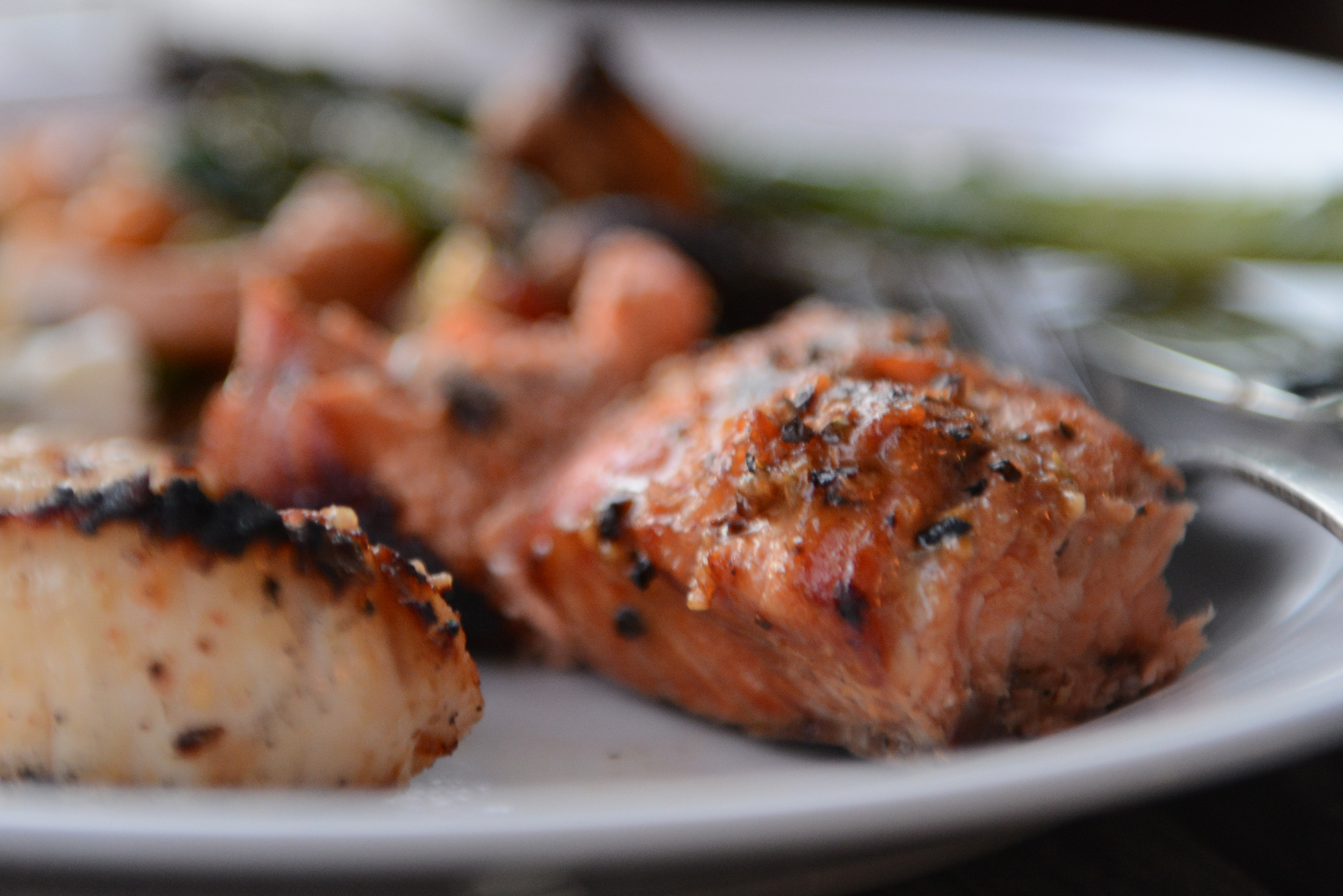Obesity and Mindful Eating
Food is necessary to sustain life and maintain good health. However, the internal physiological mechanisms that exist to moderate hunger, appetite and satiety can be overridden or ignored in favor of a range of external factors, making it difficult to differentiate between the physical requirement for nutrients and the desire to eat in order to fulfill other needs. Whilst this disconnect can lead to poor food choices, overeating and obesity, the learned skill of mindful eating can help restore patterns of behavior supportive of physical health and emotional wellbeing.
A Different Perspective on Food

Mindless or Unconscious Eating
Many people will be familiar with the experience of finding they have unexpectedly finished their meal or snack, have consumed more than they had intended or feel uncomfortably over-full, because their attention was elsewhere whilst eating. It is common for people to eat whilst engaging in other activities such as watching television, having a conversation on the phone, reading or driving. Many people are also in the habit of eating quickly; perhaps grabbing some fast food whilst commuting to or from work, or eating lunch at their desk. These behaviors can be referred to as mindless or unconscious eating, and are strongly associated with unintentional overeating.
Television viewing is particularly linked to obesity, with reduction in time spent watching television positively associated with weight loss. The reasons for this are not clearly understood, but television viewing is a sedentary activity known to increase snacking and reduce memory of food consumption and also tends to result in increased exposure to food advertisements, all of which may play contribute towards poor health outcomes.
Emotional Eating and the Need to Identify Your Feelings
The tendency to eat when experiencing negative thoughts or feelings is often referred to as emotional eating and has been linked to increased body weight and to severe obesity in particular. Obese individuals are more likely to eat greater quantities of food than non-obese individuals when experiencing negative emotional states, prompting research into the possibility that underlying issues with processing and regulation of emotions may contribute towards obesity in some people.
Alexithymia is a term used to describe difficulty in identifying or describing feelings and emotions. Research suggests that alexithymia is particularly prevalent amongst obese individuals and increased difficulty in identifying feelings is associated with a greater degree of emotional eating. It has been hypothesized that those who are unable to easily identify or differentiate emotions may experience a physiological response to emotional stimuli, and may use food as a means to control or modulate this response.
High affect intensity is a trait displayed by individuals who tend to experience their emotions very strongly and are highly sensitive to emotional stimuli. It has been associated with increased food intake and episodes of binge eating. Suppression of emotions, which occurs when an individual attempts to inhibit outward signs of their inner feelings, is also linked to overeating and has been found to increase intake of foods high in fat and carbohydrates; the so-called “comfort foods” that stimulate opioid receptors in the brain.
Change your Patterns

An episode of emotional eating may be triggered by stress, resentment, grief, boredom, loneliness or low mood, with some individuals using food as a distraction from the source of their distress or to postpone a feared or unwanted task. Increased consumption of calories has also been found to occur when a susceptible individual’s sense of self-worth is threatened. Hence situations that can trigger feelings of low self-esteem are particularly associated with overeating. Eating due to stress is known to involve increased consumption of foods high in fat and sugar, and there is also evidence to suggest that this form of emotional eating may result in increased abdominal adiposity, independently of overall weight gain. Whatever the trigger, episodes of overeating are frequently followed by feelings of guilt or self-recrimination, which can in turn lead to further emotional distress, creating a vicious cycle that can be challenging to break.
Food Insecurity and Social Influences
Social factors including life experiences, family and cultural attitudes, environmental circumstances and personal beliefs can have a strong effect upon eating behavior.
When eating in the presence of others, certain individuals may moderate their own behavior based upon the actions of those around them. For instance, some people may unconsciously eat more than they would otherwise have done because they ate more quickly to keep up with their companions, or carried on eating for longer because they observed others doing so. Some people can also experience more overt social pressures around food, such as being encouraged or coerced by friends, family or coworkers to overeat or make unhealthy food choices.
Those who have at some time in their lives experienced a period of food insecurity, when their access to an adequate supply of food was restricted for some reason, can be more prone to obesity. Food insecurity can promote a number of eating behaviors linked to weight gain, such as a tendency to consume foods that are calorie-dense yet nutritionally poor, or to overeat at times when food is readily available.
Many people habitually eat at certain times or under particular circumstances, irrespective of physiological hunger or state of satiation. For instance an individual might always have a snack when watching a particular television program or eat when socializing with friends. Eating at predetermined times can be difficult to avoid due to regulated workplace schedules and fixed lunch breaks.
Be Wary of Food Marketing, Packaging and Presentation
Advertising and marketing campaigns can powerfully influence the type and quantity of foods we consume, and as unhealthy foods such as those high in fat, salt or added sugar tend to be advertised more heavily than healthier foods, it is unsurprising that exposure to advertising is typically not associated with positive health outcomes.
Advertisements frequently seek to reinforce the message that unhealthy eating practices, such as snacking on high-calorie foods, are normal and pleasurable, often embedding images of food within emotionally loaded content carrying the implication that by choosing to eat or drink the product in question we may gain increased happiness, social desirability or some other benefit.
The way food is presented and packaged can have a significant impact upon how much we consume. Research has shown that many people are highly reliant on visual cues when determining how much to eat, and thus when presented with larger portions, typically tend to consume more than they might otherwise have done. For instance, if an individual intends to eat until their plate is clear, they may keep eating for far longer than they need to achieve physiological satiation when presented with a larger plate of food, even if they ultimately cannot eat everything in front of them. There is also evidence to suggest that we tend to implicitly view portion or package sizes as being representative of a “normal” or “appropriate” amount to consume, allowing this unconscious assumption to influence our eating behavior and perception of how much we have consumed at the expense of acknowledging physiological satiety cues. Studies conducted using soup bowls that could be refilled automatically without the diners’ knowledge found that those whose bowl was constantly refilled consumed significantly more overall, yet did not perceive themselves to be any more full than those whose bowls contained a predetermined volume of soup.
Mindful Eating and Empowering Your Choices
Mindfulness is a learned skill associated with a number of positive health outcomes. Mindfulness-based techniques and interventions are well validated in the treatment of depression, anxiety and cardiovascular disease and when applied to eating and situations involving food have also been shown to reduce episodes of binge eating in obese individuals and promote adherence to dietary guidelines in those with diabetes.
The Beauty of Food

Essentially, mindful eating is the practice of paying full attention to the experience of eating; observing the tastes, textures, flavors, appearance, sounds and smells of food, whilst also attending to the physical and emotional aspects of eating by learning to appreciate the difference between internal and external hunger cues. Mindful eating can support weight loss and healthy eating by helping to cultivate an awareness of and appropriate response to physiological hunger and satiety signals whilst placing emphasis on quality over quantity and fostering an understanding of which foods the body needs for good health.
Mindful Eating Is Not Dieting
It may seem counterintuitive that increased focus on food and eating can lead to an overall reduction in caloric intake, yet research shows that eating quickly or distractedly results in greater overall consumption whilst taking the time to enjoy a meal results in less consumption.
There is evidence to suggest that the ironic process theory, which states that suppressing unwanted thoughts can lead to a counterproductive rebound of those thoughts, may offer some insight into why certain obese individuals are unable to lose weight through dieting. Most commercial diets focus on restriction of calories or specific types of food whist failing to providing dieters with the means to understand or moderate their eating behavior. Dieting individuals can become increasingly preoccupied with food as they seek to control their behavior around it. Conversely, when eating mindfully, the goal is simply to observe and experience, without judgment or restriction.
It is important to emphasize the fact that mindful eating is not a diet, and does not in itself place any direct restrictions upon quantities or types of food consumed. Clearly, individuals who must adhere to specific dietary requirements or restrictions following bariatric surgery or due to the presence of hypertension, diabetes, allergies or other conditions must continue to do so. However, within any such boundaries, mindful eating can still be practiced safely and effectively. Indeed, as the practice fosters an awareness of the effects of different types of food upon physical and emotional state, it can help those on restricted diets to make optimal food choices in terms of health and enjoyment.
Another factor that can contribute towards dieting failure is the abstinence violation effect (AVE). This occurs when a dieting individual has an initial lapse, frequently precipitated by strong food cravings or urges, during which they overeat or consume a “prohibited” food, prompting them to abandon the diet altogether. AVE is thought to occur when an individual attributes the initial lapse to internal factors that they perceive to be beyond their control, such as a lack of willpower or the belief that they are genetically predisposed to obesity. When practicing mindfulness in situations relating to food, individuals are encouraged to notice and accept any food cravings or urges they experience and then simply let them pass without trying to suppress them. For most people, such urges will dissipate by themselves if not immediately responded to, and by paying attention to the circumstances under which those feelings occur, it may be possible to detect patterns of behavior or specific situations that act as a trigger for food cravings and thus to work out more appropriate strategies to deal with them. Additionally, if a binge or dietary lapse should occur, practicing mindful, non-judgmental observance of the emotions and sensations it provokes can help to diffuse unhelpful feelings of guilt or self-blame.
Many people find that when they choose to eat a less healthy food, such as chocolate, cookies or chips, in a mindful way, the experience is not as enjoyable as expected, with pleasure rapidly decreasing after the first few mouthfuls. By taking the time to consciously focus on each mouthful, excessive greasiness, saltiness or use of artificial flavorings may become more apparent, making the food seem less appealing than when eaten quickly and unconsciously. Over time this can lead to development of new tastes and preferences.
Practicing Mindful Eating
Whilst eating away from distractions is ideal, it is not necessary to suddenly start eating every meal in silence in order to eat mindfully, and even a few small changes can be beneficial. To begin with, choose a small quantity of food, such as a few raisins, or decide to eat the first three or four mouthfuls of a meal mindfully. Turn off the television and remove as many distractions as possible. Take some time to observe the appearance and smell of the food before taking a bite, then chew each small mouthful slowly and consciously, focusing on the experience of eating; the tastes and textures in your mouth. Does each mouthful taste the same as the last? Is the fourth mouthful as enjoyable as the first? Try to notice and acknowledge in a non-judgmental manner any feelings or emotions that arise as you eat, as well as any physical sensations that occur. Think about how the experience differs from eating the same food mindlessly.
Subsequently, aim to build mindfulness practice into your regular routine. If it still seems daunting to eat every meal in such a manner then choose one meal per week that you can eat and enjoy mindfully, or aim to eat the first few mouthfuls from each meal mindfully.
Farm-Fresh Herbs and Spices

Eating should be prompted by the physiological need for nutrients, but that does not mean that the experience should not be enjoyable. It is also important that you feel better rather than worse after eating. Recognize and acknowledge your own food preferences without judgment. Be aware of any sensations relating to hunger or satiety before, during and after eating. Take regular breaks between mouthfuls to observe and consider how you feel. Are you still hungry?
If you lose concentration or overeat, take note of the physical sensations and emotions you are experiencing but do not engage in self-recrimination. Instead try to use the experience constructively to inform the choices you make in the future.
Further Suggestions and Moving Forward
If possible, eat only when you are genuinely hungry, rather than habitually or at predetermined meal times, such that food consumption is initiated and regulated by your own physical hunger and satiety cues rather than being governed by the clock. It is best to eat before strong hunger develops, as it is more difficult to eat slowly and consciously and to make healthy food choices when extremely hungry.
When serving food, take advantage of the fact that visual perception can influence consumption by using smaller plates and bowls. By preparing as many of your own meals as possible, ideally using fresh ingredients, you will have more control over portion sizes than when eating convenience food. Buying packages of food that contain individually wrapped servings can also help minimize the risk of unconsciously overeating.
Some people feel that they should always eat all the food on their plate, perhaps through the desire to avoid waste, due to social conditioning or for other reasons. This practice can override the body’s signals that satiation has been reached, and is therefore not a mindful behavior. One approach to breaking the habit is to make sure you deliberately leave a small amount of food on your plate at each meal. This can help to minimize the risk of overeating and also provides an opportunity to observe any emotions that may arise as a result of not finishing all the food in front of you.


